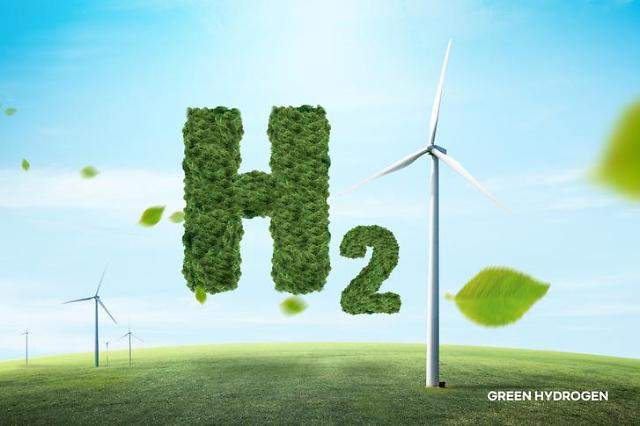[Gettyimages Bank]
SEOUL — Researchers at a South Korean national university have developed a catalyst using non-precious metal materials. The nanostructural catalyst can be used for mass production of green hydrogen. Because the catalyst is not made from precious metals such as gold, silver and platinum, it is less expensive than conventional catalysts.
While regular hydrogen production requires fossil fuels to separate hydrogen from other gaseous or liquid materials such as ammonia, green hydrogen is more environmentally friendly because it is created using an electrolysis technique to separate hydrogen from water. If renewable energy is used for the separation, the production process becomes completely zero carbon.
Jeonbuk National University said in a statement on March 11 that its research team had developed a production technique for a catalyst in the form of a nano-multidimensional structure using iron and tin. The newly developed catalyst showed a surge electric current density of about 1.490 V (@ 10 mA cm-2), lower than the surge voltage of conventional catalysts of about 1.545 V (@ 10 mA cm-2). Catalysts with lower overpotential ratios are more efficient.
The researchers said the new catalyst is more stable than conventional products made with gold or platinum. According to Jeonbuk National University, the new catalyst is ready for commercialization. “This research has great significance in the field of hydrogen production because the new catalyst is cheap and highly efficient while the conventional production method is very expensive,” the university said.
© Aju Business Daily & www.ajunews.com Copyright: Nothing on this site may be reproduced, distributed, transmitted, displayed, published or broadcast without the permission of Aju News Corporation.






More Stories
Delay in mass production of new Intel products is a boon for AMD, share of AMD x86 server processors expected to exceed 22% in 2023, according to TrendForce
Quantum industry milestone brings mass production of quantum chips closer
NEO Battery Materials provides updates on installation of additional equipment for mass production optimization and final stages of commercial plant design for construction